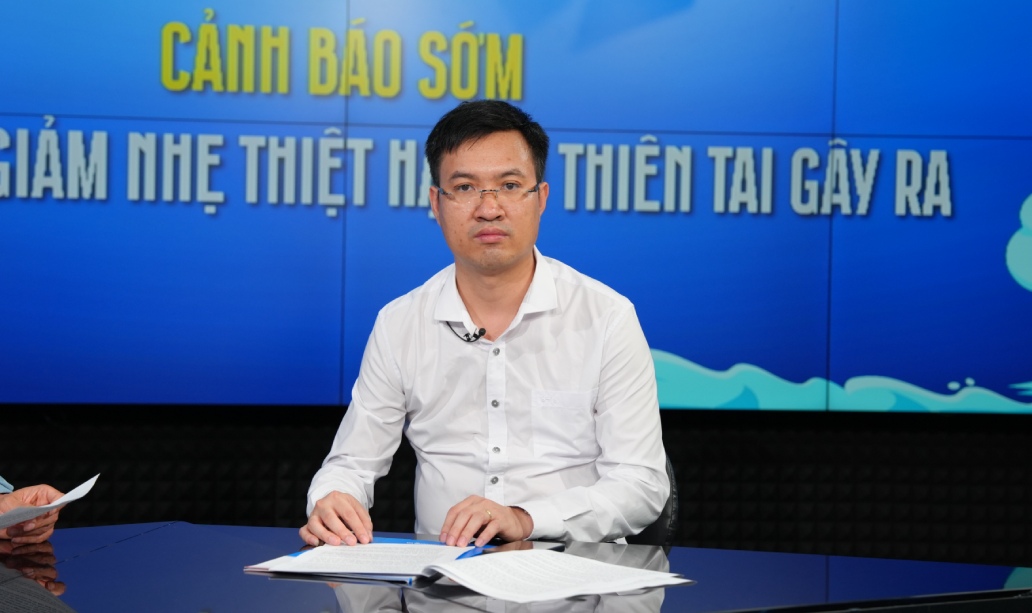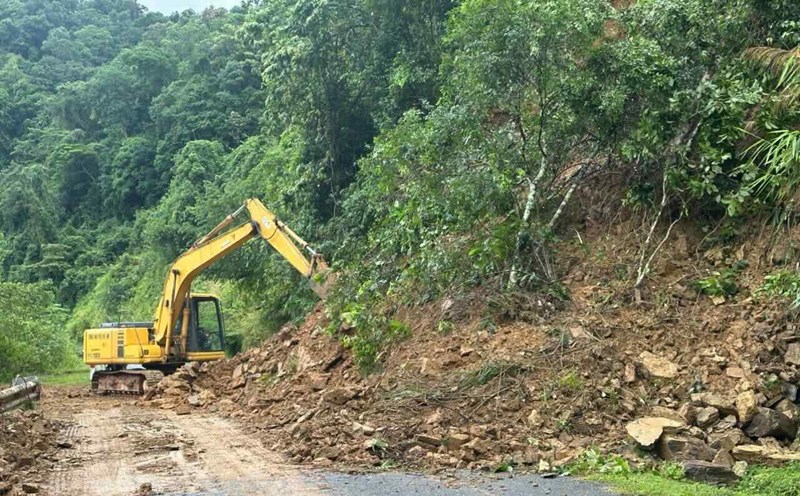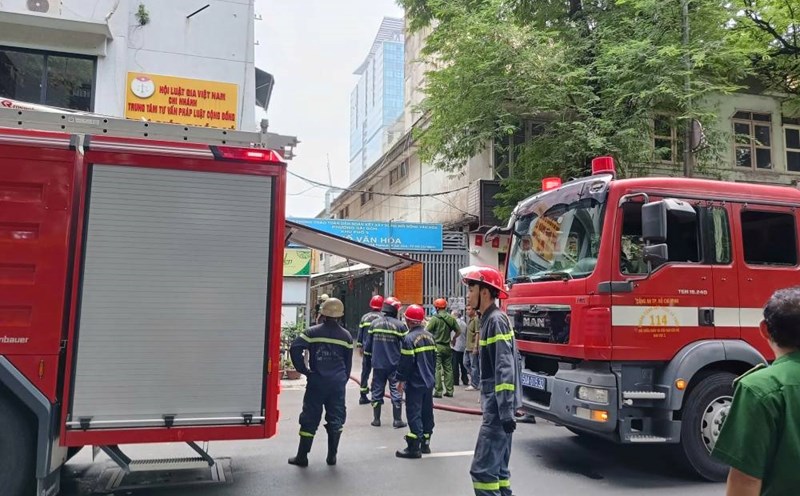At the seminar with the theme "Early warning - Key to mitigating damage caused by natural disasters" held on July 7, Dr. Hoang Phuc Lam, Deputy Director of the National Center for Hydro-Meteorological Forecasting, Department of Hydro-Meteorology, Ministry of Agriculture and Environment and Dr. Truong Ba Kien, Deputy Director of the Center for Meteorological and Climate Research, Institute of Meteorology, Hydrology and Climate Change, Ministry of Agriculture and Environment had a discussion to open up new perspectives on the meaning of the early warning bulletin.

Warning capacity has made great strides but still has many challenges
At the seminar, experts clearly recognized that Vietnam's forecasting and warning capabilities have made clear progress in both accuracy and timing of early warnings.
According to Dr. Hoang Phuc Lam, the current storm warning may be issued 5 days early; widespread heavy rains can be forecasted 2 - 3 days in advance with a reliability of up to 75%. fenomena such as severe cold, major floods, hot weather... have all been given qualitative warnings earlier than before.
"A bright spot is the ability to forecast large-scale natural disasters such as drought and salinity intrusion in the South and Central regions early and remotely - which has significantly reduced damage to agricultural production in recent years" - Dr. Lam said.
However, both experts believe that the biggest challenge at present is short-term extreme forecasting.

According to Dr. Truong Ba Kien, the uncertainty of weather under the impact of climate change increases, causing phenomena such as storms forming near the shore, changing direction suddenly, extreme rain in a short time, or unseasonal thunderstorms to appear more unusual and unpredictable.
"L limit the possibility of short-term extreme forecasting, especially for phenomena of heavy rain of 1 - 3 hours, flash floods, landslides in mountainous areas or thunderstorms, locally strong lightning in the plains" - Mr. Kien said.
Warning is not just information but must be action
The special highlight of the seminar was the aspect of "how to truly warn people" - especially vulnerable communities such as mountainous areas, coastal areas, remote areas.
According to Dr. Truong Ba Kien, the problem lies not only in forecasting technology, but also in warning communication. Information needs to be fast, easy to understand language, and specific instructions for people to act. Although the newsletters issue yellow, orange, and red warning colors - if they do not have a clear and close message, the warning can easily be ignored or misunderstood.
"Therefore, to truly put warnings into practice, it is necessary to build a community communication network near the people, popularize knowledge of natural disaster prevention right from schools, and at the same time promote commune/ward authorities to proactively accompany the meteorological sector in communication work and provide instructions on response actions" - Dr. Kien proposed.
Meanwhile, Dr. Hoang Phuc Lam shared a series of solutions that have been and are being implemented by the Department of Hydrometeorology such as communication work and dissemination of warning information being promoted, not only through newspapers and television but also through digital platforms. Forms such as sending warning messages via phone, Zalo, local platform applications, social networks and specialized websites to ensure information is reached to people quickly, conveniently and easily.
Towards automating the hydrometeorological network
Lessons from major natural disasters such as super typhoon Yagi in 2024 or typhoon Wutip in the early 2025 season show that early warnings have helped minimize damage.
In addition, experts also shared the strategic vision of the meteorological industry for the next 5-10 years.
According to Dr. Hoang Phuc Lam, the development strategy for the Hydrometeorological sector to 2030, with a vision to 2045, has been approved by the Prime Minister in Decision No. 1970/QD-TTg dated November 23, 2021, a guideline for the comprehensive modernization roadmap for the sector in the coming time.
Despite many difficulties in financial resources and actual conditions, the industry is still focusing all efforts to maintain the stability of the existing monitoring system, while gradually modernizing and automating the national hydrometeorological network.
To date, 1,426/1,835 stations have been automated. In addition, the weather radar network is also being proposed to be expanded in key areas such as island and mountainous areas, where natural disasters frequently occur.
In addition, strongly apply modern technologies, including artificial intelligence (AI), Big Data, remote monitoring technology and contactless measurement solutions in the meteorological, hydrological and hydrological station system.
At the same time, international cooperation continues to be identified as an important pillar. The industry is expanding cooperation with international meteorological organizations and countries in the region to share data, technology and experience, especially in forecasting at sea and cross-border river basins - where close coordination is needed to improve the quality of warnings.
With synchronous solutions in technology, institutions, human resources and international cooperation, the Hydrometeorological sector is aiming to build a modern, automatic, smart forecasting and warning system, approaching advanced levels in the region and the world - thereby better meeting the needs of socio-economic development and protecting the safety of people in the context of increasingly complex climate change.







